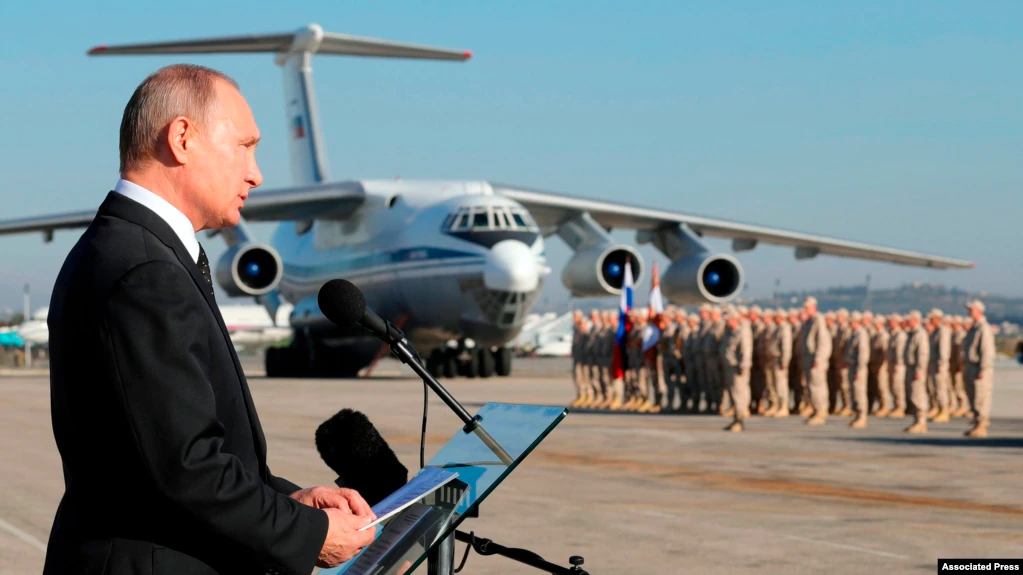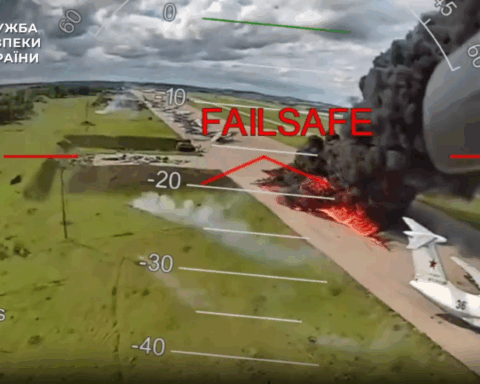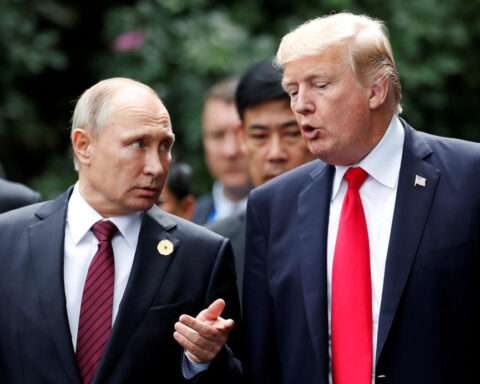Saber-rattling or preparing for war?
Western officials and analysts remain split on the significance of Russia’s military deployments along its border with Ukraine. Russia deployed around 100,000 troops earlier this year, claiming the movement was temporary and for training exercises.
But most of the force has remained, and elite units have been added recently, often covertly overnight, according to Western and Ukrainian officials. That has prompted rising alarm in Kyiv and Western capitals.
Gen. Kyrylo Budanov, chief of Ukraine’s defense intelligence agency, added to rising anxiety Sunday when he told America’s Military Times newspaper he suspects the Kremlin is preparing a major offensive for early next year, probably by late January.
According to Budanov, the attack would likely involve airstrikes, artillery and tank bombardments as well as an airborne assault in eastern Ukraine and amphibious assaults on the Ukrainian port towns of Odessa and Mariupol. A smaller incursion might be mounted through neighboring Russian ally Belarus, Budanov added.

Before then though, Russia would step up psychological warfare and disinformation campaigns, already under way, designed to destabilize Ukraine, he said. “They want to foment unrest, through protests and meetings, that show the people are against the government,” he said.
He warned if an attack were to be unleashed, it would dwarf the Russian incursions seen since conflict erupted between the two countries in 2014.
Ukrainian intelligence released a map detailing its assessment of how the invasion would play out, with Russian forces pushing deep into the country from north, east and south. It would be a much more traditional, but bloodier, operation than the Kremlin’s seizure of Crimea in 2014. Budanov believes that the ultimate goal of the Kremlin is to topple Ukrainian President Volodymyr Zelenskiy’s administration.
“They want to make the situation inside the country more and more dangerous and hard and make a situation where we have to change the government,” he said. “If they can’t do that, then military troops will do their job.”
Budanov is at one end of a spectrum of opinion over the intentions of Russian leader Vladimir Putin. Is the deployment a provocative gambit intending to goad Kyiv and Western powers into making a poor move in a much broader geopolitical game of chess?
Is it a feint meant only to taunt? Or is the Kremlin working up to what chess aficionados would term an Armageddon game, one aimed at producing a decisive result?

Senior U.S. officials have warned NATO allies that the Kremlin might be plotting to seize more parts of Ukraine in a repeat of its 2014 annexation of Crimea.
“We don’t have clarity into Moscow’s intentions, but we do know its playbook,” warned U.S. Secretary of State Antony Blinken earlier this month. “Our concern is that Russia may make the serious mistake of attempting to rehash what it undertook back in 2014 when it amassed forces along the border, crossed into sovereign Ukrainian territory, and did so, claiming falsely that it was provoked.”
The Kremlin on Monday claimed the dire warnings about a troop buildup along the border are being used to justify supplying Ukraine with high-tech weapons, including Javelin anti-tank missiles. Amid the weeks of escalating tensions between Russia and Ukraine, Kremlin spokesman Dmitry Peskov told reporters in Moscow: “Kyiv is itself building up its forces, Kyiv is being helped to build up its forces, Kyiv is being supplied with a significant number of weapons, including modern high-tech weapons.”

He added, “The number of provocations is growing and growing significantly. These provocations are being carried out with weapons being supplied by NATO countries, and we are observing this with great alarm.”
He suggested Kyiv is looking for a way to vanquish pro-Moscow separatist rebels who seized a swathe of the country’s eastern Donbas region after Moscow annexed Ukraine’s Crimean Peninsula in 2014.
Ukraine, the United States and the European Union accuse Russia of manufacturing the separatist land grab and sending troops and arms across the border to support the rebel forces. Moscow denies those claims.
Over the past few weeks, American officials have been sharing with European allies their intelligence assessments which highlight that Moscow is close to being able to launch a quick large-scale push into Ukraine from multiple points of the map, according to European officials who spoke with VOA. U.S. officials told Bloomberg News Monday that Moscow had also called up tens of thousands of reservists, who could be used to secure territory overrun by tactical battalions, freeing them up to press on with offensive operations.
No one is saying a Russian offensive is for certain.
“I can’t speak to Russia’s intentions. We don’t know what they are,” Secretary Blinken said earlier this month. But officials do see something different and edgier this time from previous troop buildups along Russia’s shared border with Ukraine.
They are factoring in Russia’s decision in October and again this month not to send additional natural gas supplies to Europe, worsening an energy crunch, and what they see as the Kremlin’s efforts to capitalize on the migrant crisis along the Belarus-Polish border manufactured by Belarusian leader Alexander Lukashenko, a Putin ally.

The combination of all three — the troop deployment, the migrant crisis and Western Europe’s energy crunch — has grabbed the attention of the Western powers, persuading them that this time might be different.
“Russia has stated it has sufficient gas supply to meet European energy needs. It can and should provide additional supplies through the existing pipeline network, including Ukraine. Failure to do so threatens European energy security and brings into question Russian motives for withholding those supplies,” a U.S. State Department official told VOA.
Michael Kofman, director of Russia studies at the U.S. Center for Naval Analyses, questions whether all of this is a Putin feint, a taunting of the West to see what advantages might be secured.
“If the Russian deployments and political discourse are indicative, they are threatening a significant military operation,” he tweeted last week. Kofman says he is wary of the narrative that Putin is “just bluffing.”
Of the map Ukraine’s military intelligence agency released outlining possible Russian incursion routes, Kofman tweeted: “I think this is a sobering and fairly accurate picture of what is being considered. The Russian military can do this. This is a worst-case iteration of several possible contingencies.”
Creating uncertainty about the Kremlin’s immediate intentions might be Putin’s main goal, says David Kramer, who was assistant secretary of state in the administration of U.S. President George W. Bush.
“Everyone is wondering, what’s Putin going to do? I think he loves it when we ask those questions,” Kramer says.
He added the Kremlin thrives on discomfiting the West by being unpredictable.
“Having things unresolved and unstable serves his interest as much as anything. He enjoys seeing the West trying to divine what he’s up to, and that’s not exactly a way to proceed for a stable, predictable relationship. He doesn’t like being ignored. And I think he feels that the American focus on China is a bit of an insult to him,” Kramer told VOA.
But he fears Putin is rolling the dice. And that, he says, is a “really risky thing.”
Cindy Saine contributed to this report. Some information came from Bloomberg.






